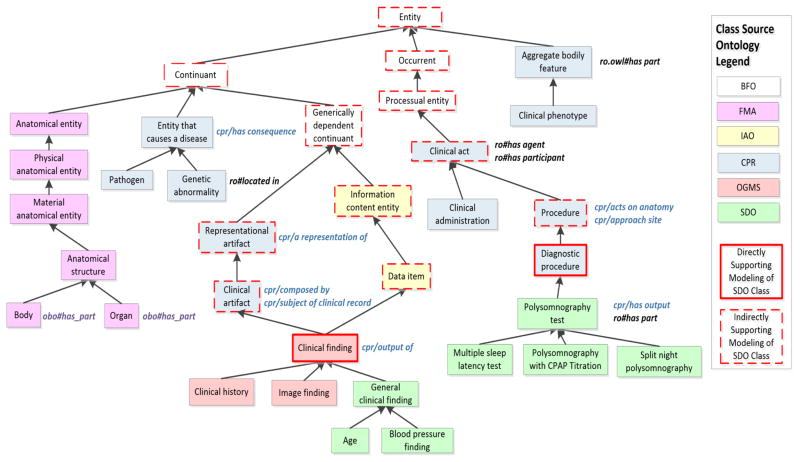Figure 1.
An excerpt of 34 classes, included from various source ontologies, in the Sleep Domain Ontology (SDO). Classes are shown as boxes. Each class is color-coded according to its source ontology (see legend). Classes with a solid red outline are directly supporting the modeling of an SDO class and classes with a dashed outline are indirectly supporting the modeling of an SDO class. Upward directed arrows represent taxonomic (i.e., hierarchical) relationships. Properties that are used in a restriction on a class are shown to the right of the respective class and are color coded according to their source (e.g., properties from CPR are colored blue). We note that the SDO reuses the has part object property from multiple versions of the Relations Ontology (RO). We denote the different versions according to their IRI and color coding (obo#has_part, included via FMA, is purple and ro.owl/has part is black).

